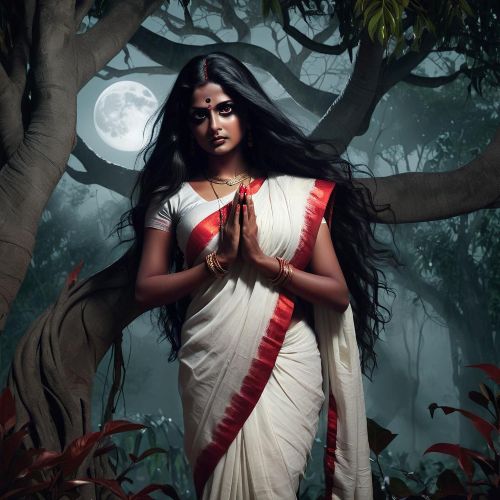South Asian Ghosts hold a vital place in the mythology and folklore of countries such as India, Pakistan, Nepal, Bangladesh, and Sri Lanka. These spectral beings are believed to inhabit the boundary between the living and the dead, often appearing in stories that blend morality, spirituality, and cultural tradition. South Asian Ghosts can be benevolent protectors, restless spirits seeking justice, or malevolent entities that challenge human courage. Their legends reflect the region’s diverse spiritual beliefs and offer insight into how communities understand life, death, and the unseen forces that influence daily existence.
In South Asian mythology, ghosts are commonly associated with specific locations such as rivers, forests, mountains, cremation grounds, and abandoned buildings. Many spirits are thought to linger due to untimely deaths, unfinished business, or improper funeral rites. Benevolent ghosts may provide guidance, protection, or blessings, whereas malevolent ones often act as warnings or punishments for moral transgressions. These stories serve to instill ethical values, highlight the importance of social harmony, and encourage respect for the natural and spiritual worlds, ensuring that communities remain mindful of both seen and unseen influences.
Rituals and festivals play a central role in maintaining a connection with South Asian Ghosts. Ceremonies honoring ancestors, such as Pitru Paksha in India and similar traditions in Nepal and Sri Lanka, help spirits find peace and continue to bless the living. Offerings, prayers, and rituals serve not only to appease the departed but also to reinforce communal bonds and ethical behavior. In many legends, spirits act as moral arbiters, teaching lessons through their interactions with humans. Their presence in mythology emphasizes that life and death are interconnected, and that maintaining balance with the spiritual world is essential for personal and societal well-being.
Across South Asia, ghosts take diverse forms and embody different cultural values. In northern India and Pakistan, spirits known as bhoot or chudail may appear to frighten or warn humans, while in southern regions, female spirits like yakshi or preta highlight themes of desire, karmic consequence, and unfinished obligations. Himalayan folklore often features guardian spirits who protect sacred sites, while coastal and riverine cultures tell of water spirits who guide or challenge travelers. Despite regional variations, all these entities share a common role: they remind humans of the consequences of actions, the sacredness of life, and the ongoing presence of unseen forces in the world.
Today, South Asian Ghosts continue to influence literature, film, television, and popular media. Their stories are retold in modern horror films, fantasy novels, and folklore adaptations, preserving ancient cultural traditions while captivating contemporary audiences. Haunted sites, festivals, and rituals maintain their relevance, connecting modern life to the spiritual heritage of the region. Exploring South Asian Ghosts provides a window into centuries of belief and imagination, offering insight into how communities across the subcontinent understand morality, mortality, and the enduring bond between the living and the supernatural.



